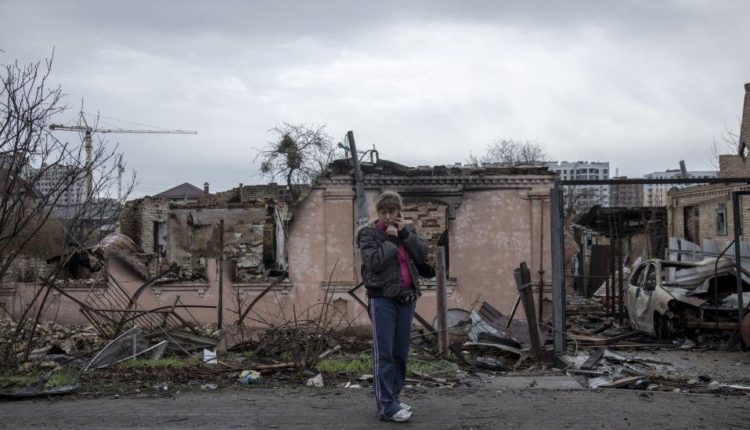NATO ministers have been meeting in Brussels this past week to discuss how far they should go in providing military equipment to Ukraine.
The challenge for Nato throughout this war has been how to give its ally Ukraine enough military support to defend itself without getting drawn into the conflict and finding itself at war with Russia.
The Ukrainian government has been explicit in its calls for help.
If it is to have any chance of fending off the coming Russian assault on the Donbas region in the east of the country, it says, then it urgently needs a resupply of the West’s Javelin, NLAW (next-generation light anti-tank weapon), Stinger and Starstreak anti-tank and anti-aircraft missiles that its forces have already been using to such effect in this war.
That much is coming. But Ukraine wants more.
It wants tanks, warplanes, drones and advanced missile air defence systems to counter Russia’s increasing use of air strikes and long-range missiles that are steadily depleting Ukraine’s strategic stores of fuel and other essentials.
President Putin reminded the world early on in this war that Russia is a nuclear weapons power and that he was moving its strategic nuclear deterrent up to a higher degree of readiness.
The US did not follow suit as it detected no movement of Russian nuclear warheads out of their secure storage bunkers. But Putin’s point was made. He was effectively saying: “Russia has a massive nuclear arsenal so don’t think you can push us around.”
Nato strategic planners worry that once the nuclear taboo is broken, even if the damage is limited to a localised target on the Ukrainian battlefield, then the risk of escalation to a catastrophic nuclear exchange between Russia and the West inevitably goes up a notch.
And yet, with every atrocity apparently committed by Russian soldiers, Nato’s resolve stiffens and its inhibitions melt away. The Czech Republic has already sent tanks, admittedly outdated Soviet-era T72s, but they are the first Nato country to do so. Slovakia is sending its S300 air defence missile systems. Both such moves would have seemed improbably risky when this war began.
Tobias Ellwood MP, who chairs Parliament’s Defence Committee, is one of those who believes Putin is bluffing when he raises the spectre of nuclear weapons and that Nato should be doing more.
‘We have been over-cautious in the weapons systems we have been willing to provide,” he says. “We need a more robust attitude. We’re giving the Ukrainians enough to survive but not to win and that must change.”
Here are just three of them:
- A Nato-supplied anti-ship missile fired by Ukrainian forces in Odesa hits and sinks a Russian warship offshore in the Black Sea with the loss of nearly 100 sailors and dozens of marines. A death toll of this magnitude in a single strike would be unprecedented and Putin would be under pressure to respond in some form.
- A Russian strategic missile strike targets a supply convoy of military hardware crossing from a Nato country, like Poland or Slovakia, into Ukraine. If casualties were sustained on Nato’s side of the border that could potentially trigger Article 5 of Nato’s constitution, bringing the entire alliance to the defence of the country attacked.
- Amidst fierce fighting in the Donbas an explosion occurs at an industrial facility resulting in the release of toxic chemical gases. While this has already occurred, there were no deaths reported. But were it to result in the sort of mass casualties seen in Syria’s use of poison gas at Ghouta and if it were found to have been deliberately caused by Russian forces, then Nato would be obliged to respond.
Source: BBC




Comments are closed.